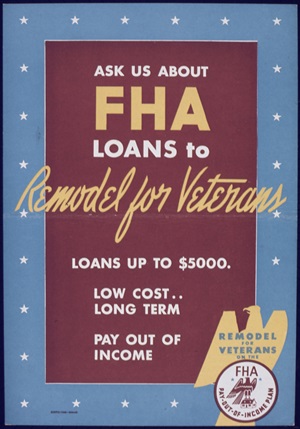Top-Level Takeaways
- Credit unions leaders in FHA lending tailor their strategies to match their resources. Some have gone all in with in-house servicing, whereas others partner with external lenders.
- Financial wellness and counseling resources are a great way to both nurture member relationships and reduce default risk.
- Investing in digital mortgage platforms can help credit unions compete with big banks and fintechs.
Soaring prices and tighter credit standards have put homeownership on hold for many people, but FHA lending offers credit unions a way to help members press play on their American Dream.
In a spring 2025 Gallup poll of non-homeowners, 30% said they think they will buy a home within the next five years; 23% said in the next 10 years. A full 45% said they do not think they will buy in the foreseeable future. Similarly, among U.S. adults who rent their home, 68% said they do so because they cannot afford to buy a home or do not have enough money for a down payment. When Gallup last asked this question in 2013, only 45% of respondents cited affordability as a reason.
But the future doesn’t have to be so bleak for would-be homeowners. FHA loans — mortgages backed by the Federal Housing Administration that require lower down payments and more flexible credit standards — can be a game changer for borrowers.

The government established the FHA in 1934 to encourage homeownership when most Americans couldn’t qualify for a mortgage. This is still the primary function of FHA lending today. With the backstop of the FHA, borrowers with a credit score of 580 or higher must provide only 3.5% of a home’s value as a down payment; those with credit scores lower than 580 must put down 10%. By comparison, anything less than 20% for a conforming loan requires additional personal mortgage insurance.
In addition to the downpayment, borrowers must meet other criteria to quality for an FHA loan, including:
- The home must pass an FHA appraisal.
- The home must be a primary residence.
- The loan amount must fall within certain limits given the cost of housing in the area.
- The borrower must carry both an Upfront Mortgage Insurance Premium and an Annual Mortgage Insurance Premium.
In 2024, the U.S. Department of Housing and Urban Development — where the FHA now resides —insured more than 790,000 FHA loans totaling $231.5 billion. To date, this loan type has a 90-day delinquency rate of 4.15%, slightly higher than the 1.19% delinquency for all mortgages.
The FHA reimburses lenders for losses incurred via an FHA loan, making them a viable option for credit unions that want to diversity their mortgage portfolio. Given these loans are well-suited to serve members with low to moderate incomes, they also support the industry’s overall mission as community-based lenders, and many credit unions have made FHA lending a pillar of their mortgage strategy.
Keesler Federal Credit Union ($4.3B, Biloxi, MS) and Leaders Credit Union ($1.2B, Jackson, TN) top the chart in FHA lending for credit unions with $10 million or more in mortgage volume. These two credit unions use FHA loans to open doors that were previously closed, and they’re not afraid to share their secrets.
LEADERS IN FHA LENDING
FOR CREDIT UNIONS >$10M IN MORTGAGE VOLUME | DATA AS OF 12.31.24
SOURCE: Callahan & Associates
| NO. | CREDIT UNION | STATE | ASSETS | TOTAL MORTGAGES | FHA | CONV. | VA | RURAL/AG. |
|---|---|---|---|---|---|---|---|---|
| 1 | Western Cooperative | ND | $481.1M | $13,900,000 | 39.06% | 42.59% | 2.99% | 15.36% |
| 2 | Keesler | MS | $4.2B | $152,925,000 | 34.62% | 49.99% | 14.91% | 0.49% |
| 3 | Service First | SD | $199.0M | $47,745,000 | 27.13% | 67.11% | 3.86% | 1.90% |
| 4 | Western Vista | WY | $251.3M | $42,005,000 | 26.33% | 59.80% | 13.87% | 0.00% |
| 5 | Texas Tech | TX | $415.6M | $225,635,000 | 25.47% | 67.70% | 6.47% | 0.35% |
| 6 | Alliance | TX | $620.2M | $219,055,000 | 25.39% | 69.30% | 4.25% | 1.06% |
| 7 | One Nevada | NV | $1.4B | $105,485,000 | 23.10% | 63.75% | 13.15% | 0.00% |
| 8 | Town & Country | ND | $716.6M | $130,925,000 | 18.82% | 61.84% | 18.63% | 0.71% |
| 9 | Orion | TN | $1.2B | $68,210,000 | 18.72% | 81.28% | 0.00% | 0.00% |
| 10 | Leaders | TN | $1.1B | $220,750,000 | 17.13% | 68.96% | 7.33% | 6.59% |
| 11 | First South Financial | TN | $768.8M | $30,305,000 | 16.09% | 83.09% | 0.00% | 0.82% |
| 12 | Union Square | TX | $590.1M | $57,620,000 | 15.45% | 71.69% | 12.85% | 0.00% |
| 13 | Mazuma | KS | $984.7M | $40,855,000 | 13.52% | 82.82% | 3.66% | 0.00% |
| 14 | Clark County | NV | $1.4B | $83,315,000 | 12.66% | 86.07% | 1.27% | 0.00% |
| 15 | Liberty First | NE | $484.8M | $58,400,000 | 12.64% | 75.75% | 11.61% | 0.00% |
| 16 | Capital | ND | $815.3M | $113,465,000 | 12.59% | 85.38% | 2.02% | 0.00% |
| 17 | Advantage Plus | ID | $261.6M | $28,850,000 | 12.39% | 83.69% | 1.72% | 2.20% |
| 18 | Sunmark | NY | $1.1B | $141,315,000 | 11.63% | 87.39% | 0.97% | 0.00% |
| 19 | First Community | ND | $1.3B | $101,070,000 | 10.62% | 82.65% | 5.18% | 1.55% |
| 20 | University | TX | $4.0B | $412,110,000 | 10.52% | 87.25% | 2.16% | 7.00% |
Customize An Approach
There’s more than one way to make FHA lending work, and success starts with choosing a strategy that fits the credit union.
Keesler keeps 95% to 99% of the loans it originates in-house rather than selling them. Oliver Brown, the credit union’s vice president of lending, says Keesler prices FHA loans slightly under par, making them more competitive for rate-sensitive borrowers. To further reduce borrower costs, the credit union charges a flat origination fee rather than the standard percentage.
FHA lending does require adherence to a more restrictive set of guidelines. To streamline training and risk mitigation, Keesler has standardized its decisioning and internal processes across its mortgage portfolio, even on conventional loans. That’s Brown’s first tip.
“Make servicing and default processes part of your infrastructure,” he advises.
Meanwhile, Leaders employs a different approach. Chris Gray, chief mortgage officer at the Tennessee cooperative, says his shop primarily sells its loans to investors rather than keeping them in-house.
“Our USDA and FHA loans have consistently played a role in our mortgage growth throughout West Tennessee,” he says.
In addition to the high volume of FHA loans, Leaders also makes a lot of USDA loans thanks to its proximity to rural agricultural communities. Gray says these loans consistently perform better in terms of delinquency and default than conventional home loans.
“We’d know if there was a pattern or problem based on feedback from the investors,” Gray says. “And we’ve never had that.”
Don’t Get Stuck On Staffing
Of course, even the best strategy can stall without the right people or partnerships to power it.

FHA underwriting requires hands-on management and underwriters specifically trained in FHA guidelines. Because it is an in-house servicer, Keesler employs full-time, direct-endorsement-certified underwriters as required by the FHA.
For credit unions unable to staff internally, institutions can partner with a DE-approved lender, such as a mortgage CUSO or investor. That’s the avenue Leaders decided to take when first pursuing FHA loans.
According to Gray, serving as a correspondent or broker is a great option for institutions looking to learn the ropes without having to invest in the overhead of specialized underwriting and audits.
“There is member demand, and it’s doable without major staffing,” the CMO says. “If the volume doesn’t warrant having a full-time government underwriter, you’re still serving your membership, you’re still offering those programs, you’re still helping some percentage of your membership obtain homeownership.”
This approach helped Leaders build confidence that FHA loans would be impactful for its members in the long term. With that knowledge, the credit union later pursued and obtained its DE designation, bringing underwriting in-house.
Nurture Member Relationships
Brown and Gray both say not to underestimate the stickiness of FHA loans. A member with a mortgage is more likely to also use the credit union for checking, savings, and other accounts, making it a gateway to a decades-long relationship.
Because of this, both credit unions emphasize their educational resources and coaching services.
Gray says one of the most powerful things a credit union can do is understand that members don’t know what they don’t know. They might approach the credit union’s programs with one goal in mind but learn they have other options.
“We do a lot of first-time homebuyer seminars,” Gray says. “It is always surprising how many people aren’t just eligible for FHA; they’re in a position to qualify for Fannie Mae with 3% down.”
In addition to offering a wide range of financial wellness resources, every mortgage loan originator at Leaders is also a certified financial counselor.
“If someone’s not ready, we work with them to get ready,” Gray says. “We sit down and go line by line through their credit report even if the member doesn’t bank with us.”

Similarly, “no” is not the end-all, be-all answer at Keesler.
“Members who don’t qualify aren’t just turned away,” Brown explains. “Often we refer them to partners like GreenPath for credit repair and encourage them to reapply in the future.”
Brown says focusing on front-end borrower education not only reduces the risk of default for the credit union but also empowers members with the knowledge they need for future success.
Keesler also invests in its tech stack to keep up with consumer expectations.
“About 60% to 65% of applications we get are fully digital,” Brown says. “And 95% of mortgages begin online, making speed and member experience essential.”
Modern origination systems can incorporate guidelines into the workflow that reduce compliance errors and increase efficiency. Keesler invested in a vendor partnership five years ago that enabled its system to function much like Chase or Bank of America.
“You’ve got to at least look and feel like Rocket Mortgage,” Brown says. “Or members will go there because of convenience.”
Remember: Mission Over Profit
At the end of the day, FHA lending isn’t about the balance sheet. It’s about the impact it has on members who would otherwise be unable to secure a mortgage.
“We’re always looking for new loan opportunities to help that underserved market,” Brown says. “Anybody can originate 720 and above mortgages. It’s those folks under 720. How do you serve them? We take pleasure in being able to see that person close on their dream home.”
It’s that commitment to serving members others overlook that sets credit unions apart.
“It’s about reach; it’s about who we’re serving,” says Gray at Leaders. “Regardless of where a credit union is located, you’ve got members that would benefit from these programs.”
The bottom line? Don’t let FHA complexity stand in the way of impact. FHA lending isn’t always easy, but it is essential. Luckily, credit unions don’t have to go it alone. Whether through partnerships, tech investment, or shared expertise, there are proven paths to making homeownership possible for more members.
Unlock Your FHA Lending Advantage. Want to delve deeper into your FHA opportunity? The HMDA Performance Scorecard makes it easy to compare your credit union’s mortgage activity to peers, spot market opportunities, and fine-tune your lending strategy. Whether you’re just entering the space or scaling your program, data-driven decisions start here. Request your free mortgage scorecard today.